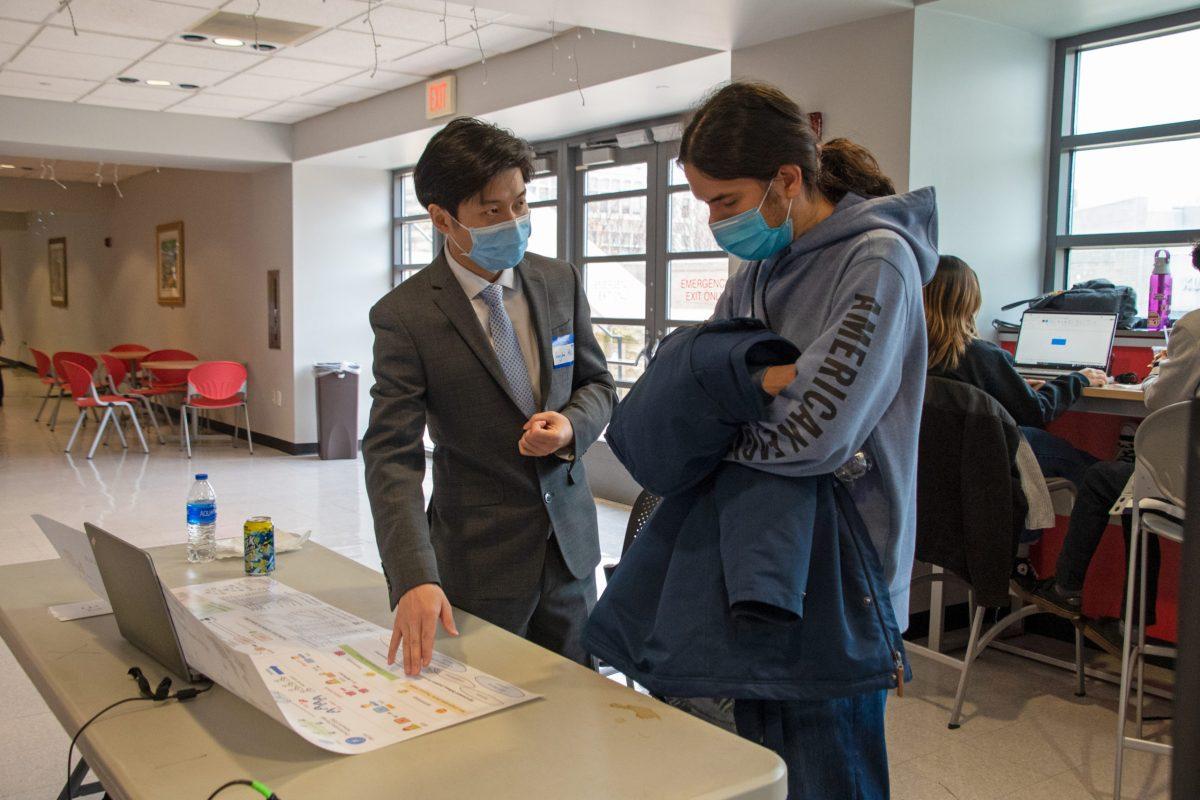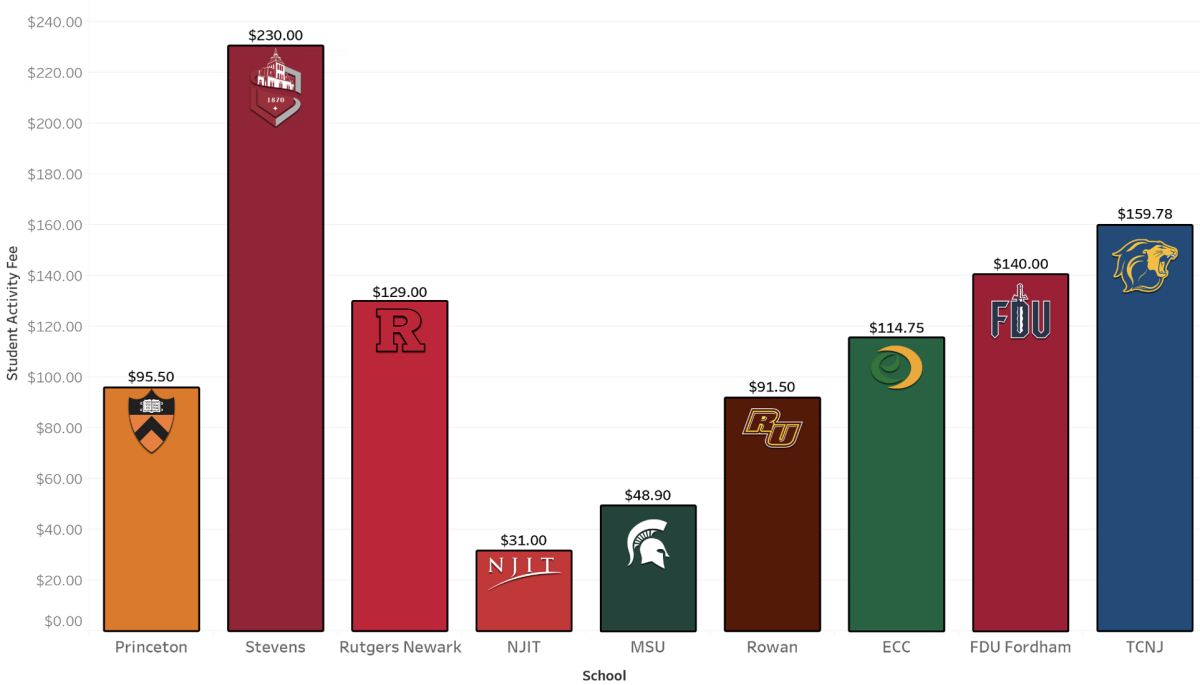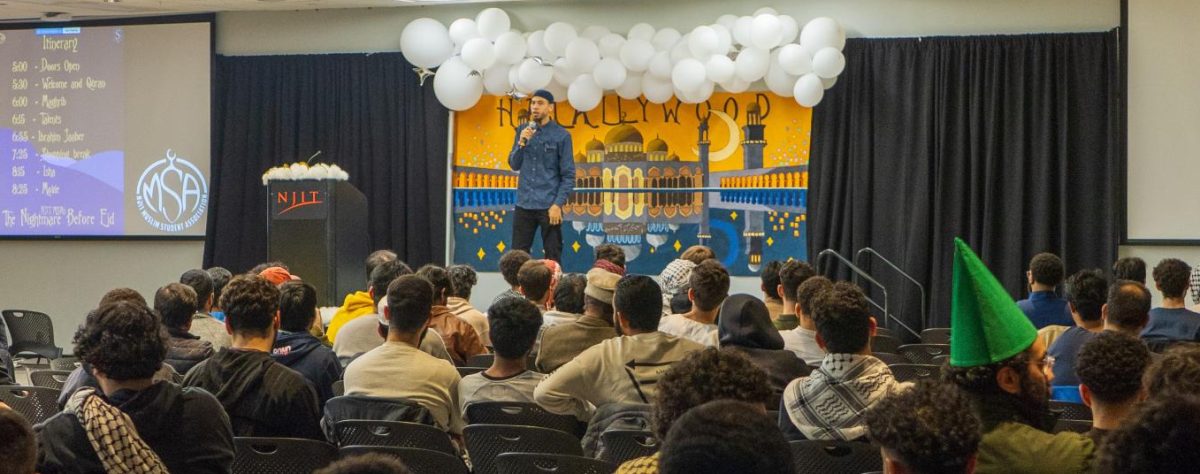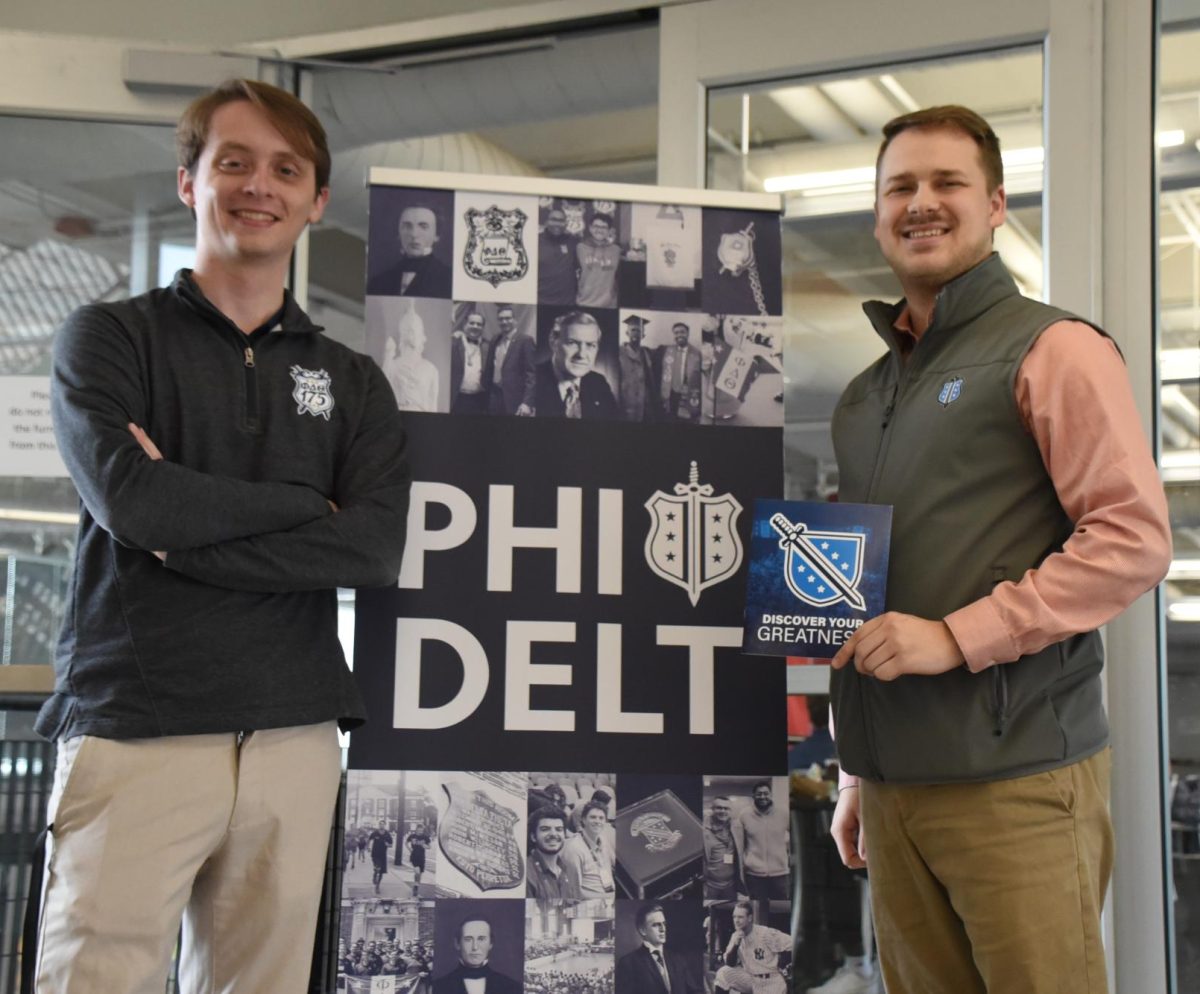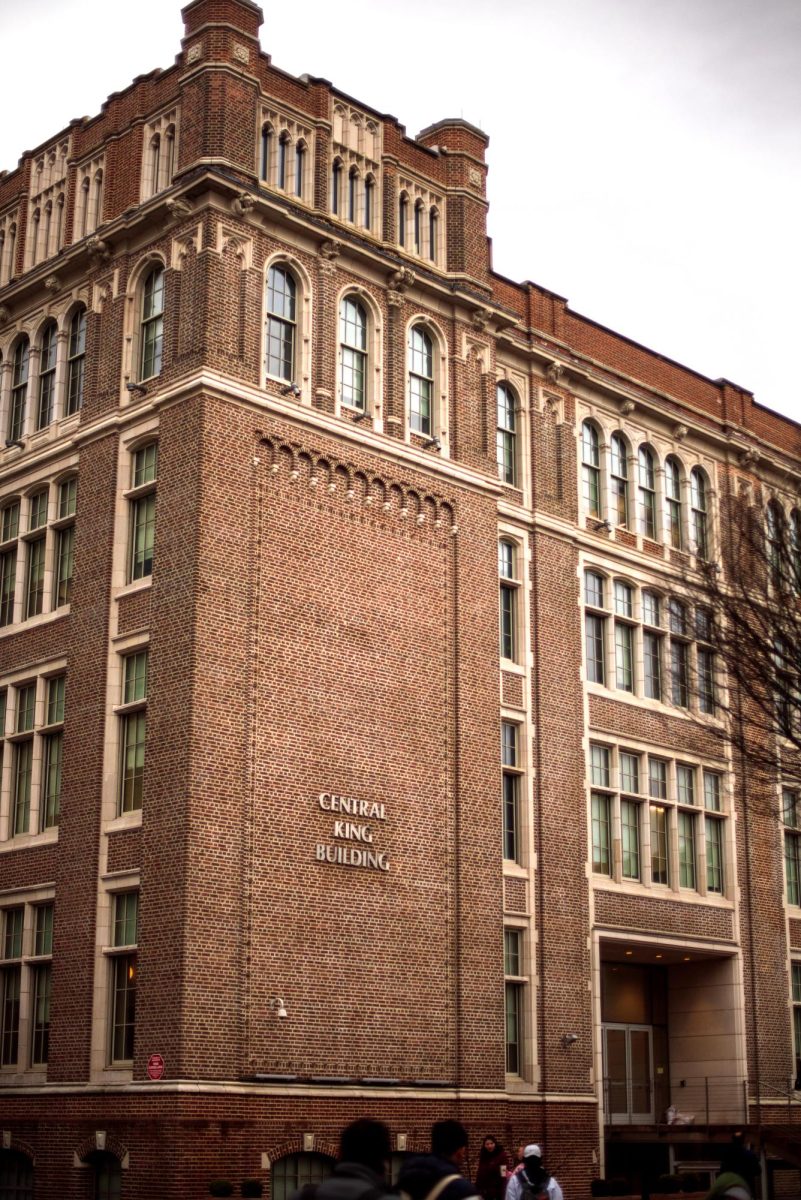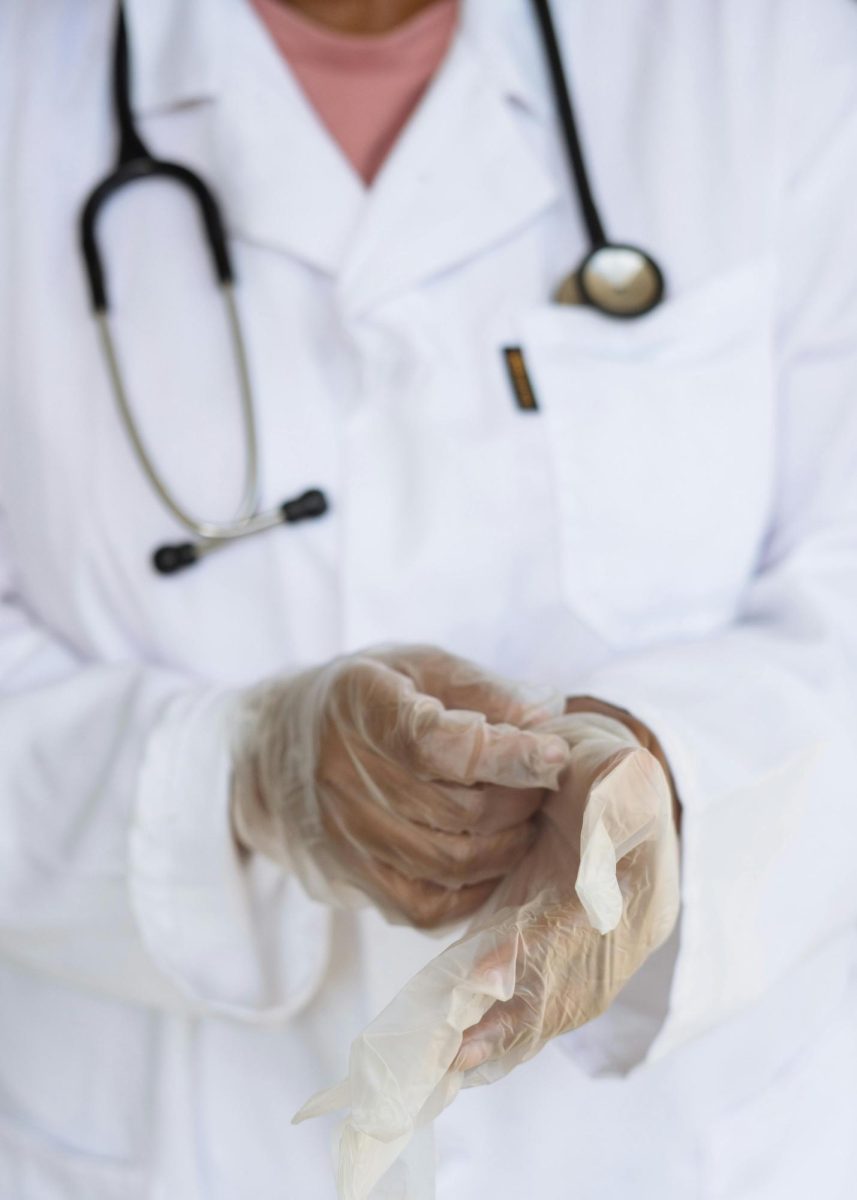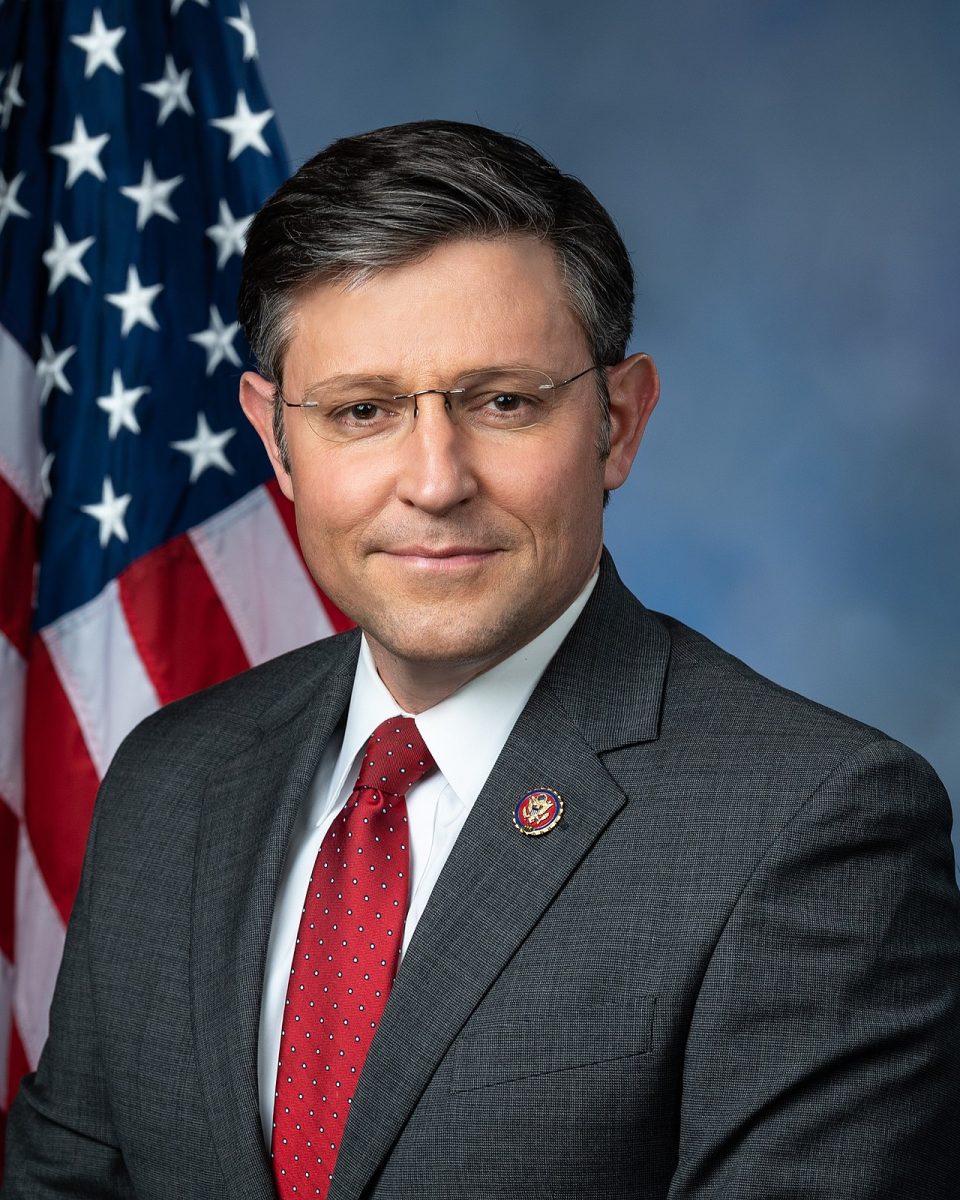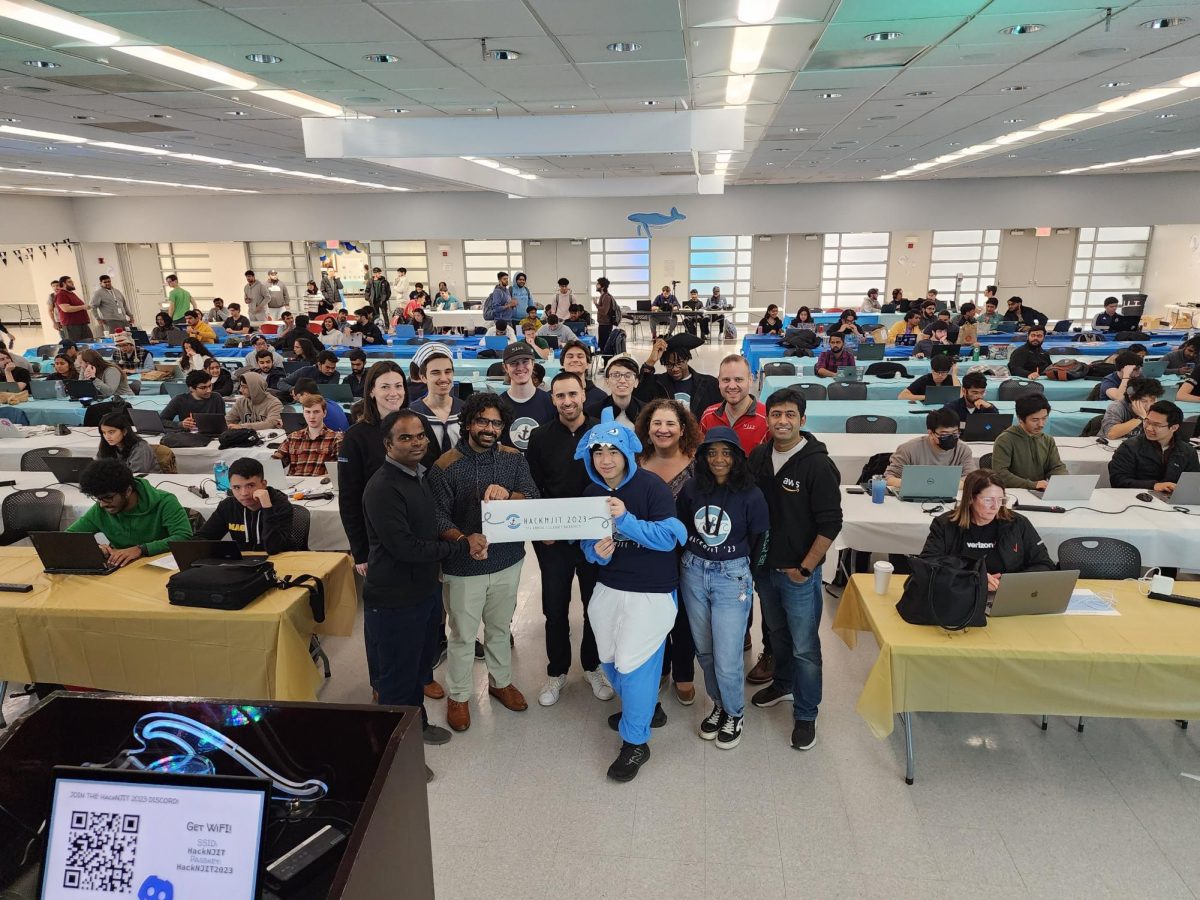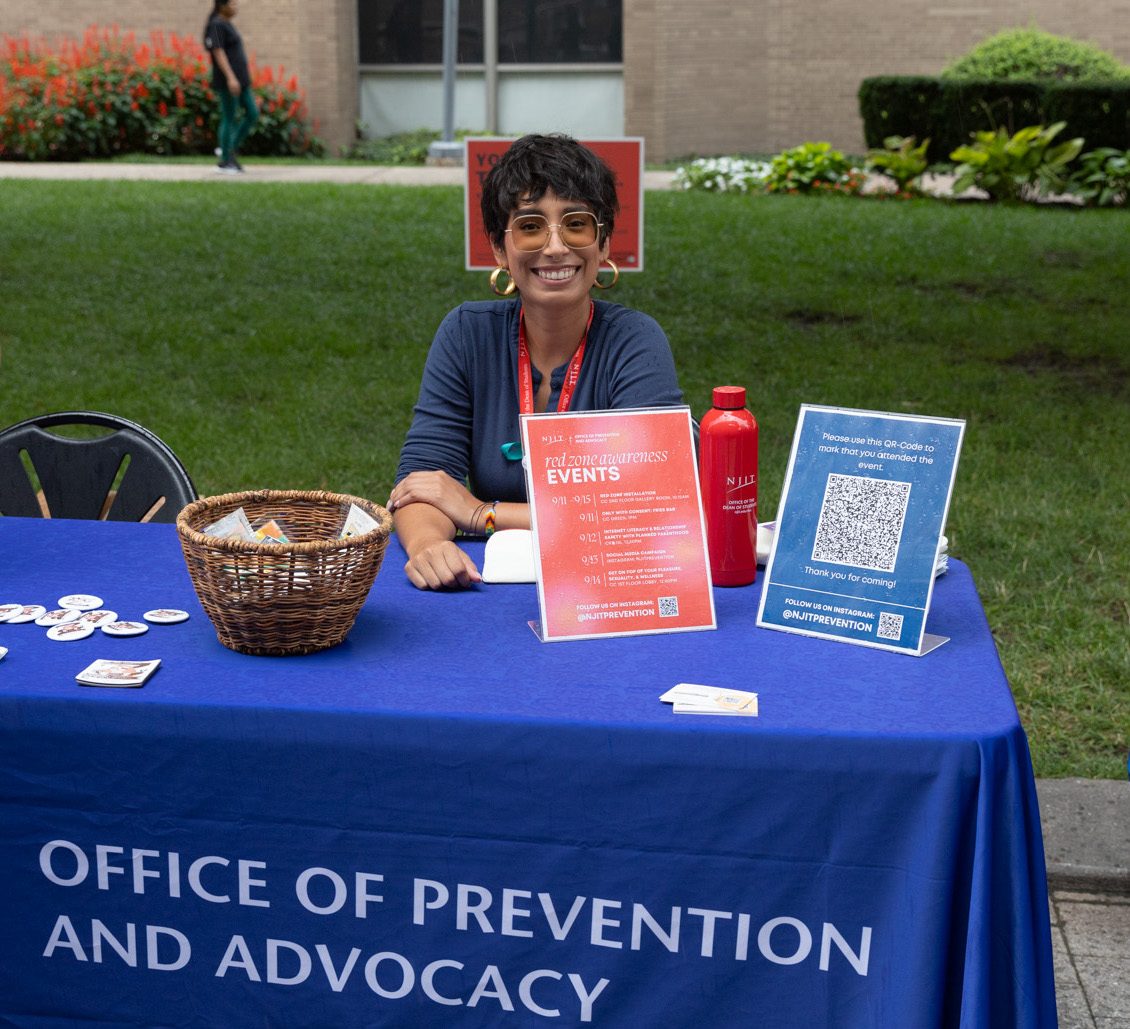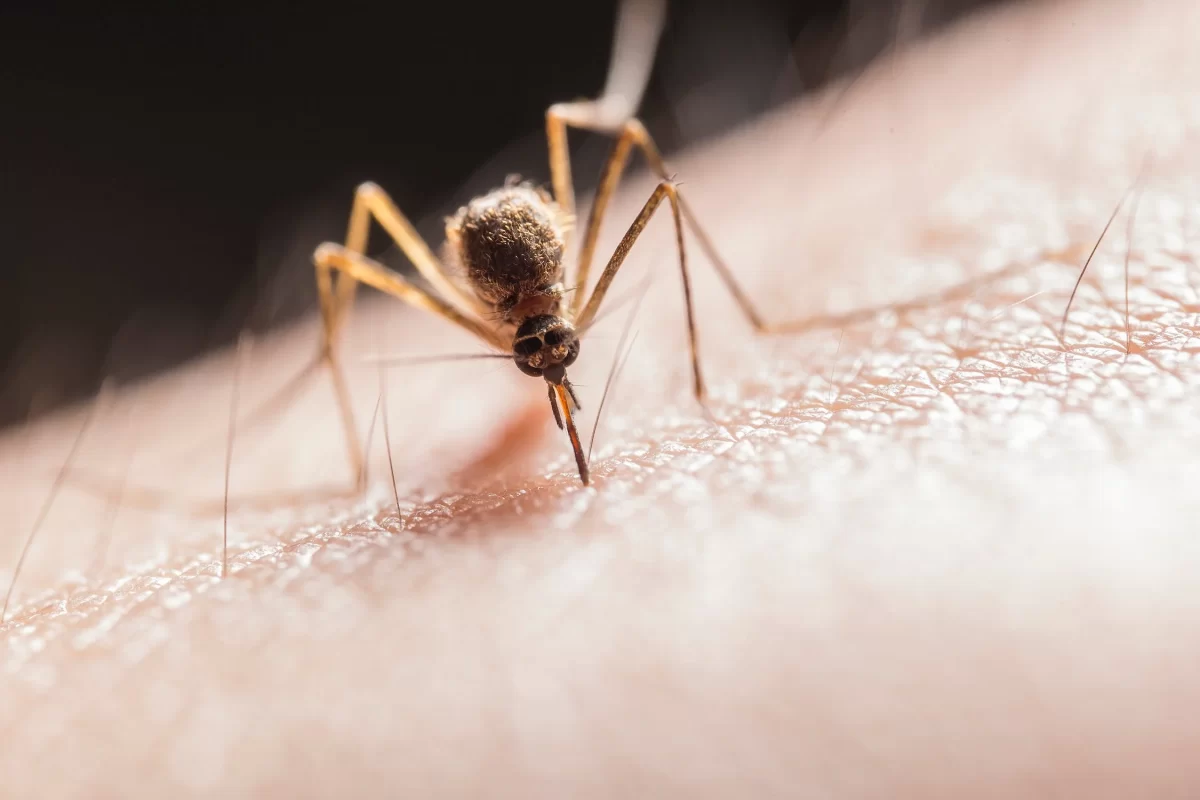On Nov. 30, guest speakers, faculty judges and student researchers gathered in the Campus Center ballroom and gallery for the Graduate Student Association’s annual Research Day. Held annually since 2004 (barring 2020 due to COVID-19 restrictions), the event showcased presentations from 38 Ph.D. candidates and one master’s student.
The day started off with greetings from GSA President and Event Organizer Shomik Mukhopadhyay, a chemical engineering Ph.D. student. Mukhopadhyay stressed the importance of research by referencing the speed at which COVID-19 vaccines were developed, noting that it would not have been possible without the years of prior mRNA research. After opening remarks from Dr. Sotirios G. Ziavras, Vice Provost for Graduate Studies and Dean of Graduate Faculty at NJIT, Princeton University Professor Robert K. Prud’homme was welcomed onstage for his keynote address: “Nanomedicine: from high tech to global health.” During the keynote, Prud’homme described how he helped develop a technology which was used to scale up the production of COVID-19 vaccines.
After the keynote address, student researchers gathered in the gallery to present their posters, displayed on wide-screen monitors. Projects were judged based on poster, speech and relevance, with winners receiving funds intended for conference travel expenses and research equipment.
First place was awarded to Aida Lopez Ruiz, a chemical engineering Ph.D. candidate from Barcelona, Spain, whose project was titled “Encapsulated Platinum Nanoparticles, Targeted Therapy for Triple Negative Breast Cancer.” Essentially, platinum nanoparticles have anticancer effects without being toxic for healthy cells, in contrast to currently used common chemotherapeutic drugs. By using encapsulation and targeted delivery techniques, Ruiz’s project is looking to improve breast cancer treatment. She attributes her inspiration for this project to her prior education and mentors.
“I was doing my master’s thesis at Northeastern University, and the lab where I was working had a lot of projects on the use of metal nanoparticles for cancer or infectious diseases,” said Ruiz. “I came up with the idea of working with platinum and silver for anticancer and antibacterial effects, but when I finished my master’s, I decided to focus on platinum for the anticancer effect. After that, I found Dr. McEnnis at NJIT. She was doing drug delivery with polymers, and we decided to combine our ideas, using platinum nanoparticles for triple negative breast cancer and encapsulating them with a polymer to target the cancer cells.”
Alina Emelianova, a chemical engineering Ph.D. candidate from Moscow, Russia, won second place. Her project, titled “Revisiting the TraPPE Force Field for Organophosphorus Compounds: Sarin, DMMP, and DIMP,” develops “the theoretical framework and computational methods for modeling the mechanical effects of fluid sorption and to employ these methods to resolve a number of problems in the area, including capturing and sensing materials for highly toxic gases, such as organophosphorus compounds.” She is also working on developing intermolecular potential models for chemical warfare agents and their simulants.
“Overall, my goal for the future is to further contribute to solving the challenges humanity is facing: climate change, environmental pollution, and civilian peace and security, with help of computational physics and chemistry,” said Emelianova. “In my work and research today, I am driven by curiosity and desire to contribute to the solutions of large-scale problems, with help of my mentor, colleagues, and the chemical engineer’s society.”
Third place was awarded to Arun Reddy Ravula, a neurobiology Ph.D. candidate from Warangal, India. His project, titled “Repeated Low-level Blast Induces Chronic Neuropathological and Neurobehavioral Changes in Rat Models,” quantified the adverse effects of blasts on rat brains, from motor deficits to short-term memory impairments. The purpose of this study was to draw attention to the negative impact of repeated low-level blasts on soldiers and other individuals who are exposed to such blasts repeatedly for years as a part of training or combat readiness.
“Compared to any traumatic brain injury research, there are very few, approximately 20 research papers published so far, on repeated low-level blast,” said Ravula, who has been working on traumatic brain injury research in Dr. Namas Chandra’s lab since 2017. “This inspired me to do a Ph.D. thesis on repeated low-level blast.”
Additional honorable mentions were awarded based on the researcher’s presentation skills. Applied mathematics Ph.D. candidate Binan Gu won honorable mention for best oral presentation for his project “A Graphical Representation of Membrane Filtration,” while environmental science Ph.D. candidate Indrani Gupta won honorable mention for best visual project for her project “The Development of Nanocarbon Immobilized Membrane for Elimination of Thermophilic Bacteria via Membrane Distillation.” Craig Iaboni, studying computer science, was the only master’s student to present amid all the Ph.D. candidates; his project was titled “A Real-Time Method to Detect and Track Multiple Mobile Ground Robots Using Event Cameras.”
From improving breast cancer treatment, to detecting and capturing toxic gases, to drawing attention to blast-induced neurotrauma in soldiers, these students are determined to make the world a better place through their research.
























